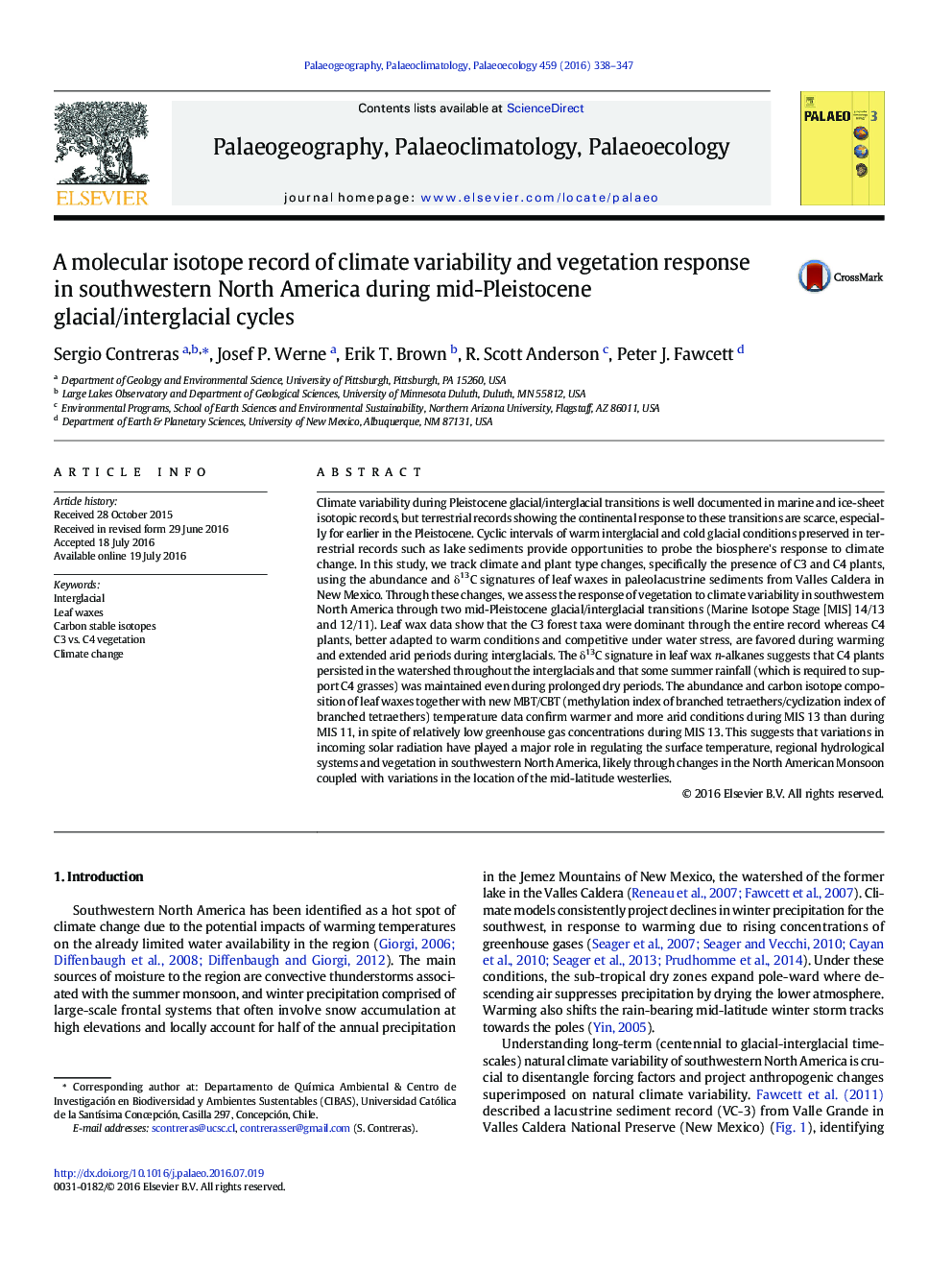| Article ID | Journal | Published Year | Pages | File Type |
|---|---|---|---|---|
| 4465640 | Palaeogeography, Palaeoclimatology, Palaeoecology | 2016 | 10 Pages |
•Continental temperature of SW North America seems to respond strongly to insolation.•High leaf wax abundance with positive δ13C values, interpreted as greater C4 contributions, characterizes interglacials.•C4 plants persisted throughout interglacial warming and droughts.•Data support the hypothesis that summer (monsoon) precipitation likely continued throughout “megadrought” periods.•The scenario agrees with IPCC projections of recent anthropogenic warming.
Climate variability during Pleistocene glacial/interglacial transitions is well documented in marine and ice-sheet isotopic records, but terrestrial records showing the continental response to these transitions are scarce, especially for earlier in the Pleistocene. Cyclic intervals of warm interglacial and cold glacial conditions preserved in terrestrial records such as lake sediments provide opportunities to probe the biosphere's response to climate change. In this study, we track climate and plant type changes, specifically the presence of C3 and C4 plants, using the abundance and δ13C signatures of leaf waxes in paleolacustrine sediments from Valles Caldera in New Mexico. Through these changes, we assess the response of vegetation to climate variability in southwestern North America through two mid-Pleistocene glacial/interglacial transitions (Marine Isotope Stage [MIS] 14/13 and 12/11). Leaf wax data show that the C3 forest taxa were dominant through the entire record whereas C4 plants, better adapted to warm conditions and competitive under water stress, are favored during warming and extended arid periods during interglacials. The δ13C signature in leaf wax n-alkanes suggests that C4 plants persisted in the watershed throughout the interglacials and that some summer rainfall (which is required to support C4 grasses) was maintained even during prolonged dry periods. The abundance and carbon isotope composition of leaf waxes together with new MBT/CBT (methylation index of branched tetraethers/cyclization index of branched tetraethers) temperature data confirm warmer and more arid conditions during MIS 13 than during MIS 11, in spite of relatively low greenhouse gas concentrations during MIS 13. This suggests that variations in incoming solar radiation have played a major role in regulating the surface temperature, regional hydrological systems and vegetation in southwestern North America, likely through changes in the North American Monsoon coupled with variations in the location of the mid-latitude westerlies.
